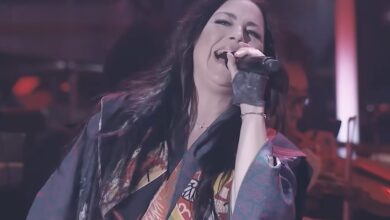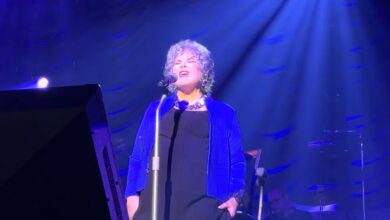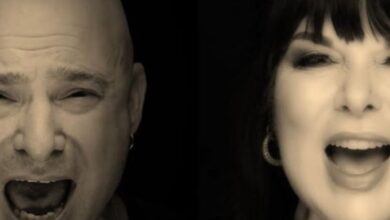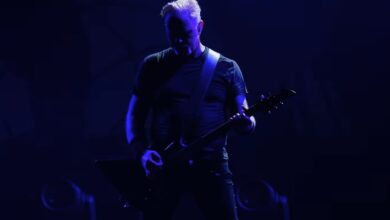Ozzy Osbourne’s “See You on the Other Side”: The Farewell That Means More Now
“See You on the Other Side” is Ozzy Osbourne’s most intimate promise, a soft-spoken farewell wrapped in a soaring rock ballad. Where his anthems usually roar, this one confides. The song turns grief into a vow: distance isn’t the end, only a pause before reunion. Its language is simple, unshowy, and therefore devastating—the kind of plain speech people actually use when loss strips life down to essentials. That directness is why it burrows under the armor of even the hardest metalhead and stays there.
Musically, the track lives in a minor-key dusk, moving at a measured tempo that lets every syllable breathe. Clean guitars set the scene, then the arrangement widens: steady drums, measured bass, and gradually a halo of strings. The dynamics rise like the swell of a throat before tears. When the chorus lands, layered backing vocals and sustained guitar notes lift the melody just high enough to feel like a hand reaching across a chasm.
Ozzy’s vocal is the axis. He doesn’t belt; he leans—slightly frayed at the edges, utterly human. You can hear the weight in the grain of his tone, the way he shapes ends of phrases as if reluctant to let them go. That restraint is the point. He isn’t playing the hero here; he’s playing the man left standing in the doorway, promising he’ll follow soon. For a singer so associated with menace and mischief, it’s startlingly tender.
The guitar work answers him like a friend finishing sentences. Instead of pyrotechnic runs, the lead lines choose long-held, bending notes—simple figures that ache. The solos favor melody over flash, climbing and then holding a pitch until it glows. It’s the sound of language failing and music stepping in. Even the vibrato feels deliberate, a small tremor that mirrors the emotional quiver in the vocal.
Production-wise, the polish serves the sentiment. Layers are stacked with care: acoustic shimmer under electric chime, discreet keys filling the air between beats, drums kept deliberately unbusy so the vocal can remain the narrative center. The strings don’t announce themselves; they seep in like twilight, intensifying the chorus without stealing it. Every element is subordinate to the lyric’s promise.
Lyrically, the song sits at the crossroads of elegy and reassurance. It recognizes separation without pretending it doesn’t hurt, yet it never collapses into despair. The “other side” functions as a metaphor wide enough to hold faith traditions, secular hope, and the quiet superstition of mourning. That ambiguity is a gift to listeners: each person can map the phrase onto their own beliefs, rituals, and memories without contradiction.
In Ozzy’s larger catalogue, this track is the grayscale photo among vivid posters. “Mama, I’m Coming Home” is about return after wandering; “See You on the Other Side” is about the one journey from which you don’t return. One is arrival, the other is rendezvous. Together they form a diptych: love sustained in life, love sustained across absence. That relationship gives the later song its peculiar gravity.
As a mid-’90s release, it also captured Ozzy at a reflective inflection point. The excess of earlier decades had receded; the voice was still strong, but his writing had turned inward—more concerned with meaning than shock value. You can hear the seasoned survivor weighing what endures when the noise fades. That perspective turned a power ballad into a kind of personal credo.
Why, after Ozzy’s death, does this song grow larger? Because its central promise now reads both ways. Fans hear Ozzy singing to the people he’s lost, and also to us—an assurance that the bond doesn’t snap just because the body is gone. Meanwhile, we sing it back to him. The chorus becomes a shared ritual phrase, a place to set flowers when you don’t have a grave nearby.
Grief is chaotic; this song gives it structure. The verse acknowledges the ache; the pre-chorus gathers breath; the chorus releases it. That architecture offers listeners a small, repeatable ceremony. Play it when the house is quiet, and the emotional sequence does its work—recognition, remembrance, release. In mourning, routines matter; “See You on the Other Side” is a three-minute vigil candle.
The imagery is carefully ordinary—roads, doors, horizons—so it never dates. There’s no heavy esoterica to pull you out of the moment. Even the title phrase feels like something said in a hospital hallway or whispered at a bedside. Because it sounds like how people actually speak when they’re scared, it becomes easy to carry into real life. After he’s gone, that familiarity makes it feel like Ozzy left us usable language.
There’s also something profoundly Ozzy about framing mortality with defiant tenderness. This is the same artist who turned darkness into theater, yet here he stares at the dark without the mask. The courage is quiet. No blasphemy, no grin—just a calm declaration that love will outlast a crossing none of us can dodge. That honesty strengthens his myth rather than shrinking it; the icon is more iconic when he admits he’s human.
Listen to the way consonants soften as the song progresses; the performance relaxes into acceptance. Early lines carry a bit more grit; later phrases are almost lullaby-soft. The band mirrors this—drums loosen, bass walks a touch more, guitar sustains linger longer. It’s as if the arrangement learns to breathe with the lyric, exhaling its resistance and settling into trust.
Context deepens meaning. Ozzy spent decades as a lightning rod—tabloids, TV, triumphs, disasters. Yet the constant through-line was devotion: to music, to Sharon, to family, to the tribe that formed around his voice. This song distills that devotion into a message that fits on the world’s smallest postcard: I’m not gone; I’m ahead. After his passing, that postcard reads like the most Ozzy thing he could have left us.
For fans, the track also reorders the setlist of memory. The bangers will always be there when the road demands adrenaline. But grief asks for something steadier, more companionable. “See You on the Other Side” is the song you can stand beside. You don’t need to crank it; you need to hold it. It’s built for shoulders, for silence afterward, for the long walk back to the car.
And finally, it transforms the fear of final goodbyes into an invitation. The “other side” isn’t only beyond life; it’s the next room, the next decade, the next time the needle drops and somebody smiles because he’s in the speakers again. That’s why the song feels larger now: it doesn’t close a book. It dog-ears a page and says, keep reading—I’ll meet you there.





